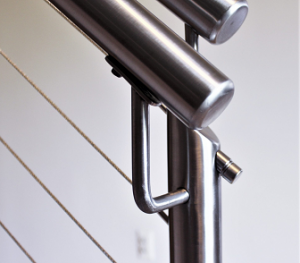What Supports the Stainless Steel Railing Handrail?
Stainless steel railings are renowned for their strength, durability, and sleek, modern appearance. But behind every sturdy and elegant stainless steel handrail is a combination of supports and components that ensure its stability and safety. Understanding what supports a stainless steel railing handrail is crucial for both design and functionality.
Key Components Supporting Stainless Steel Handrails
1. Posts and Balusters:
Posts and balusters are the primary vertical supports in a railing system. Posts are the main structural elements that anchor the handrail to the ground, floor, or wall, while balusters are the smaller vertical elements that fill the space between posts. Made from robust stainless steel, these components provide the necessary strength to support the handrail and ensure it can withstand the forces applied by users.
2. Base Plates:
Base plates secure the posts to the surface on which the railing is installed. Base plates are typically welded or bolted to the bottom of the posts and then anchored to the floor, deck, or wall using bolts or screws. Properly installed base plates are essential for the stability of the entire railing system, as they ensure the posts remain securely in place.
 3. Handrail Brackets:
3. Handrail Brackets:
Handrail brackets are used to attach the handrail to the wall or posts. These brackets are designed to hold the handrail at the correct height and angle, providing additional support and stability. Stainless steel handrail brackets are available in various designs, allowing for both functional and aesthetic customization.
4. Crossbars and Infill Panels:
Crossbars and infill panels, such as glass, cable, or wire mesh, are used to fill the space between the posts and provide additional structural support. These elements not only enhance the safety of the railing system by preventing falls but also contribute to the overall rigidity and strength of the handrail.
5. End Caps and Elbows:
End caps and elbows are used to finish the ends of the handrail and create smooth transitions at corners and angles. These components are essential for both safety and aesthetics, as they prevent sharp edges and provide a polished, professional look.
Supporting a stainless steel railing handrail involves a combination of components, each playing a vital role in the system’s overall stability, safety, and appearance. Posts and balusters provide the primary structural support, while base plates and anchors secure the system to the surface.

 +86 159 6420 9667
+86 159 6420 9667  sales@haxrailing.com
sales@haxrailing.com 



